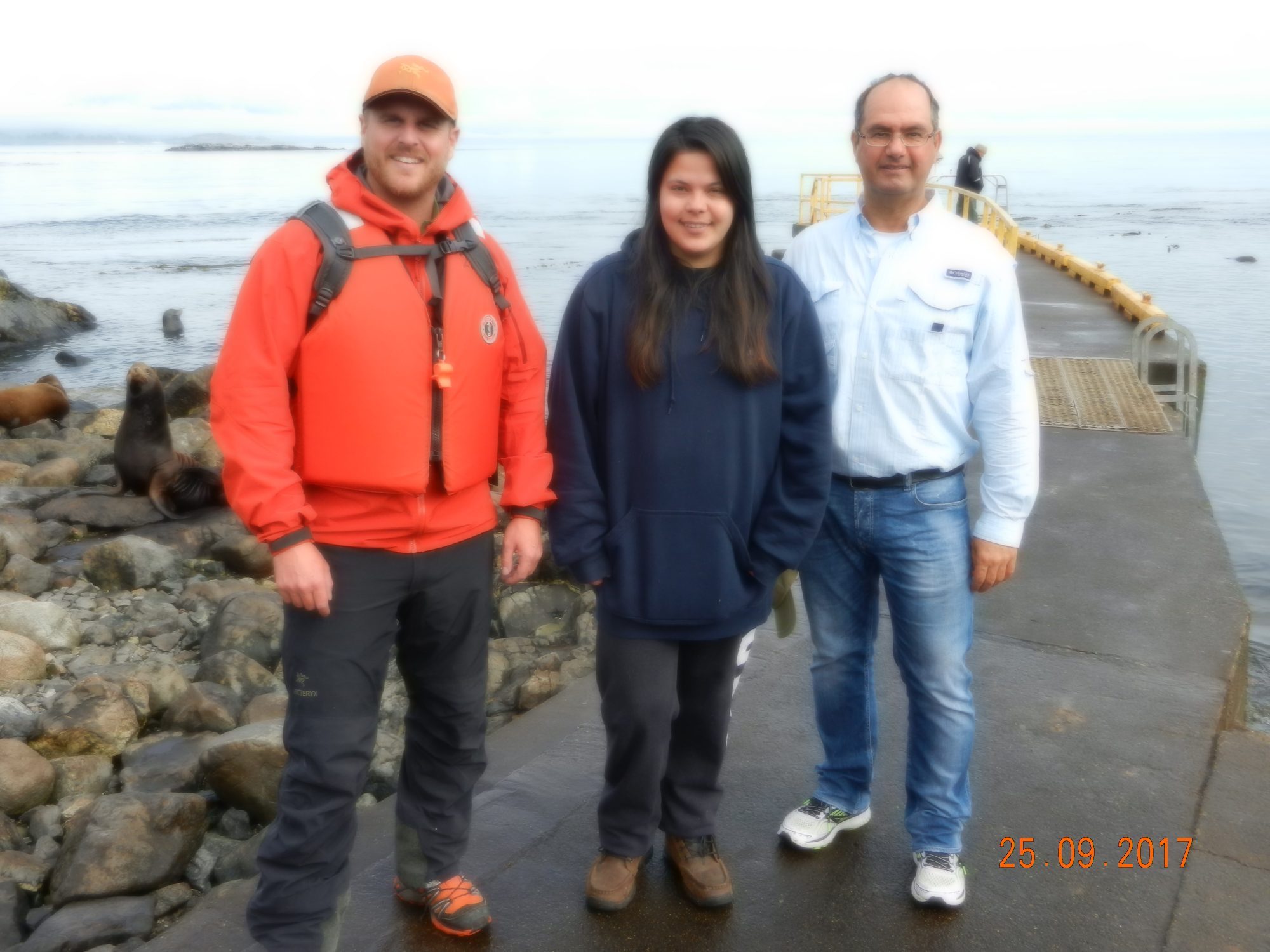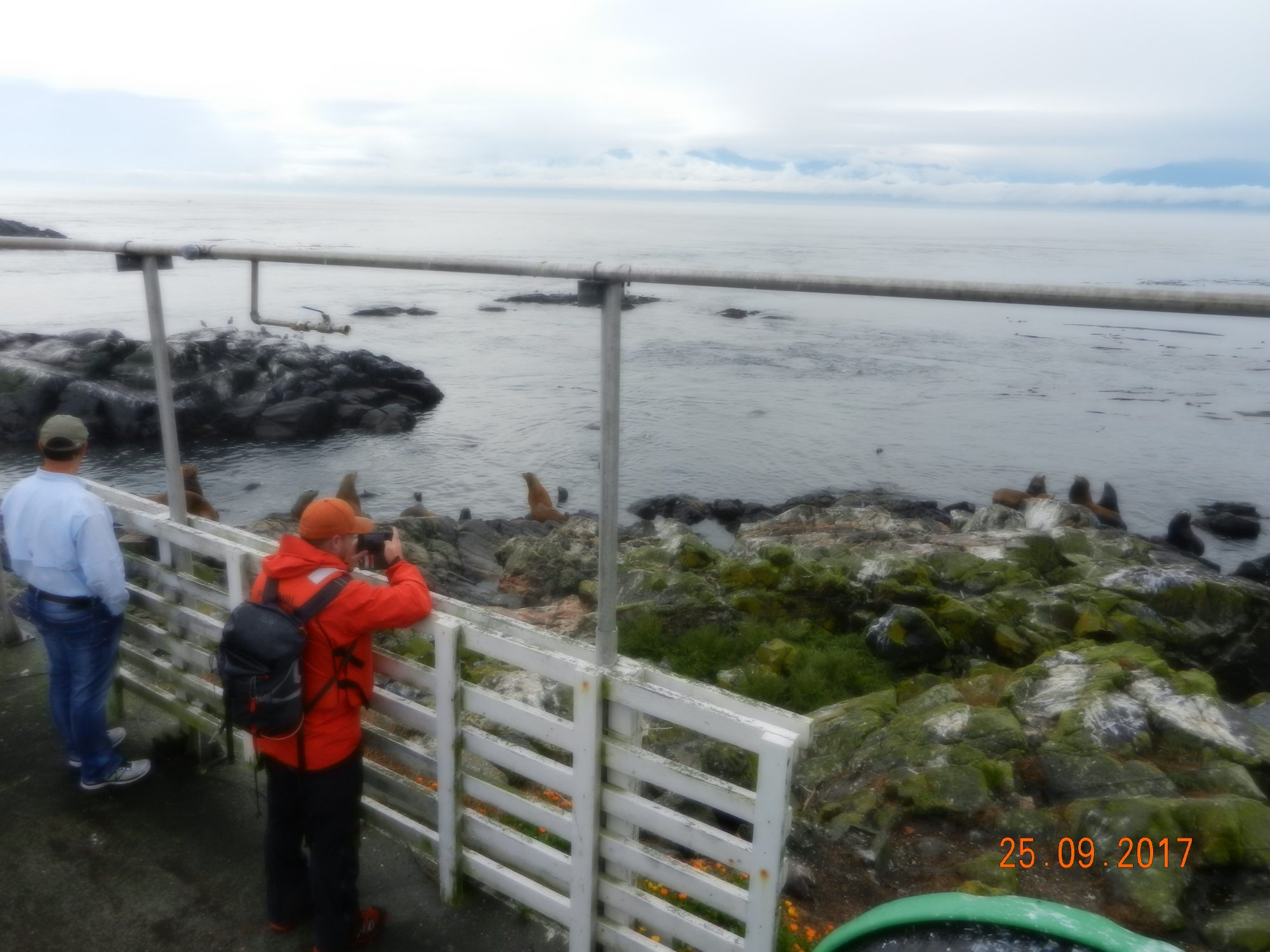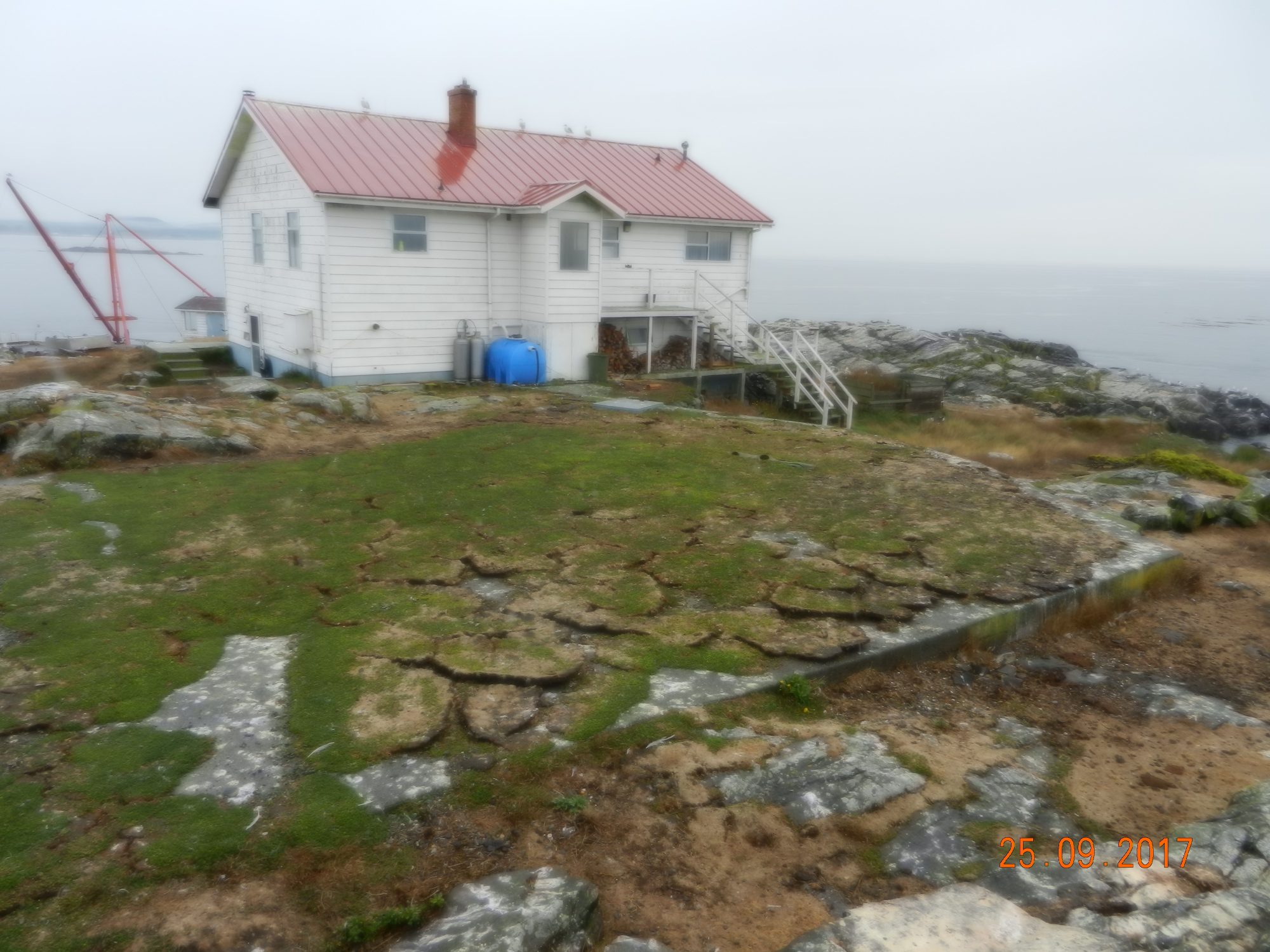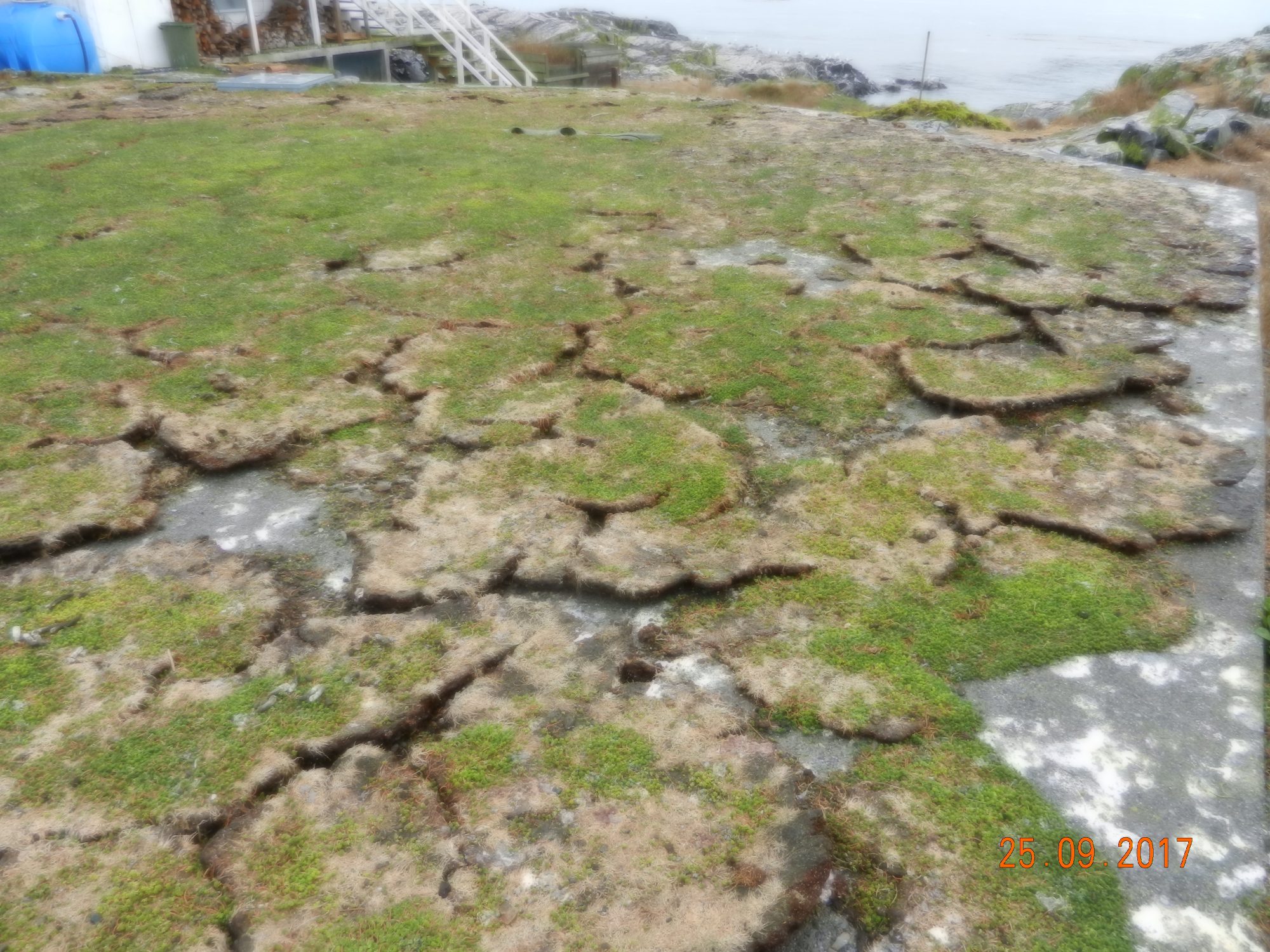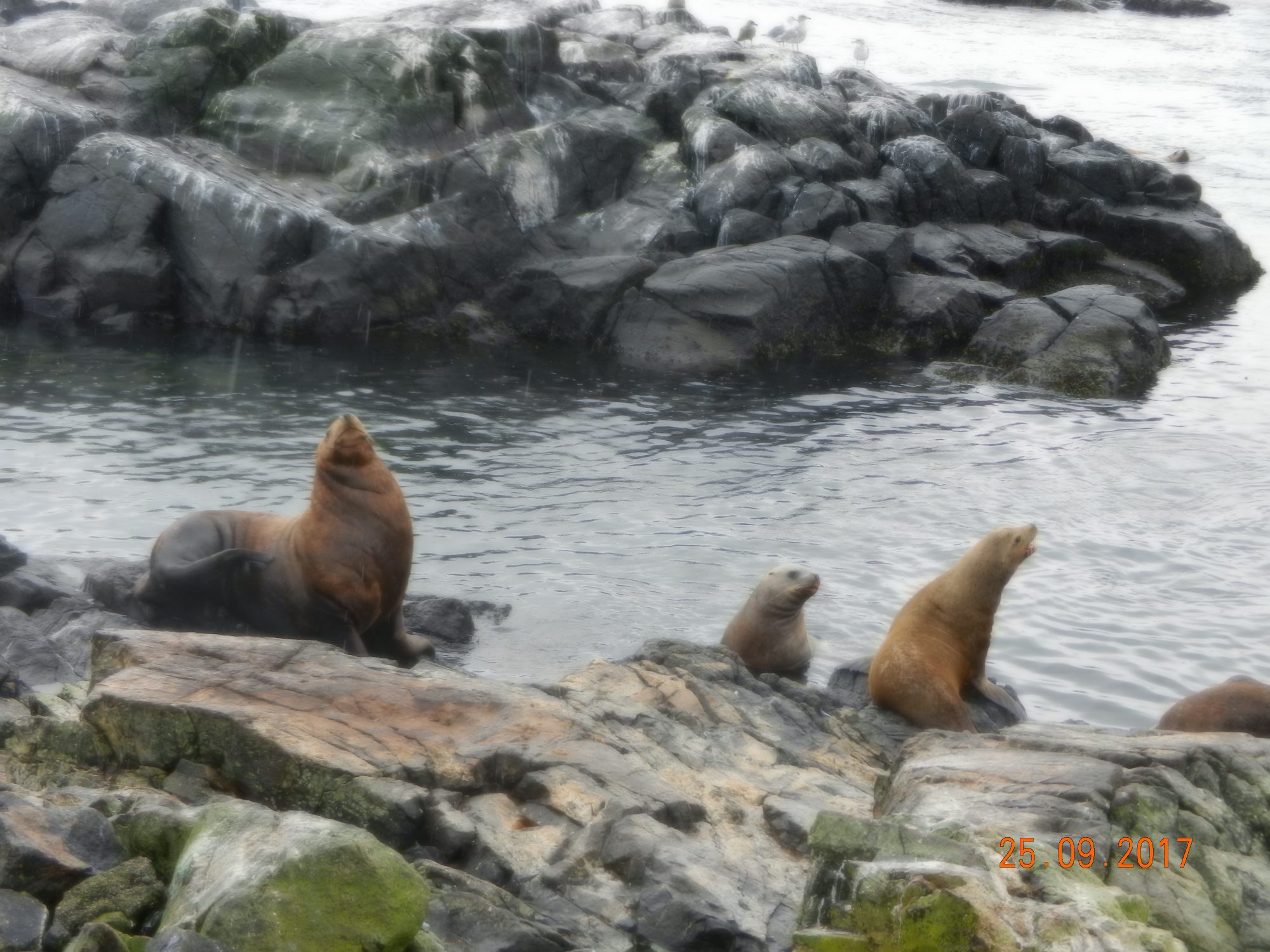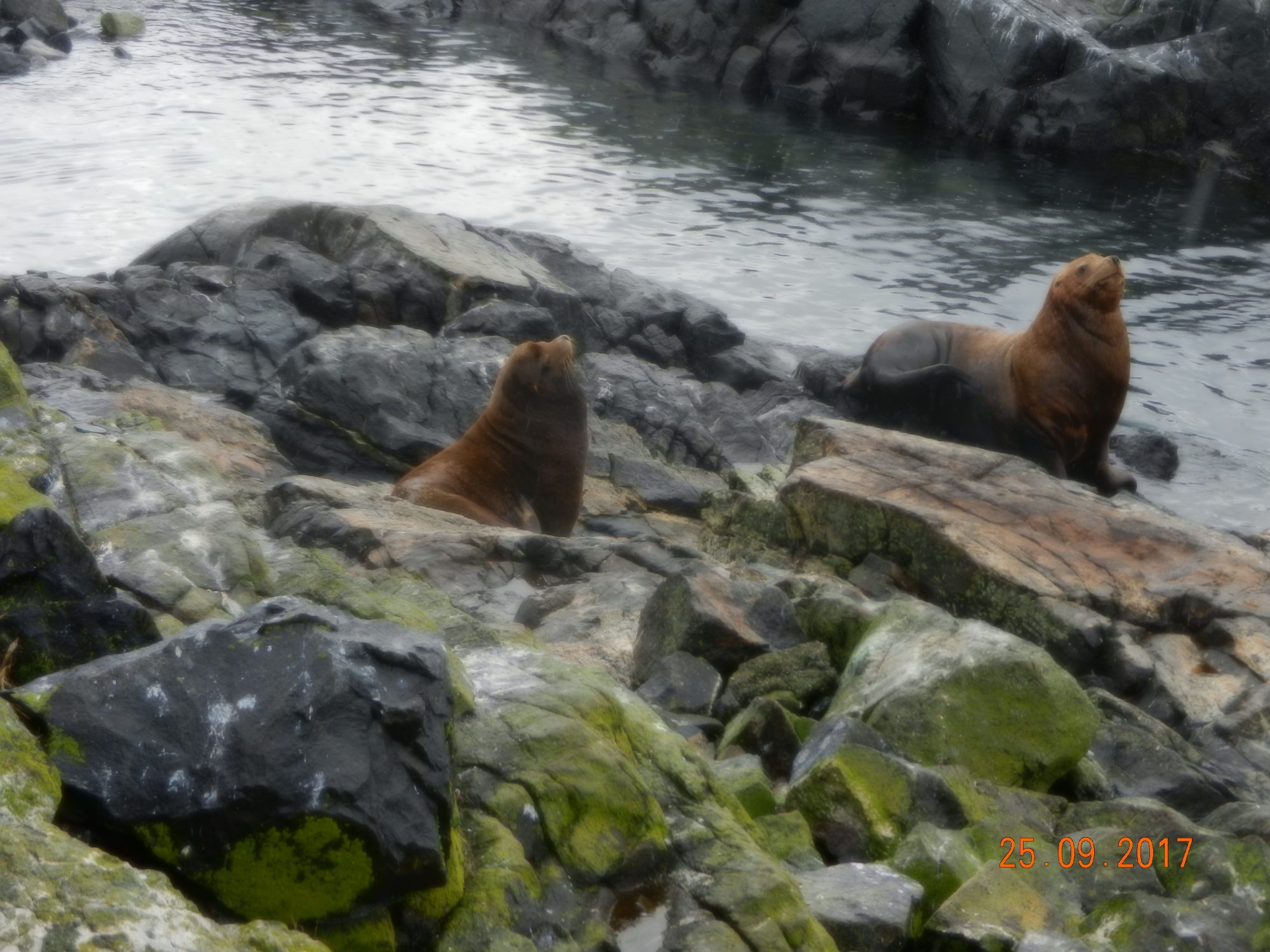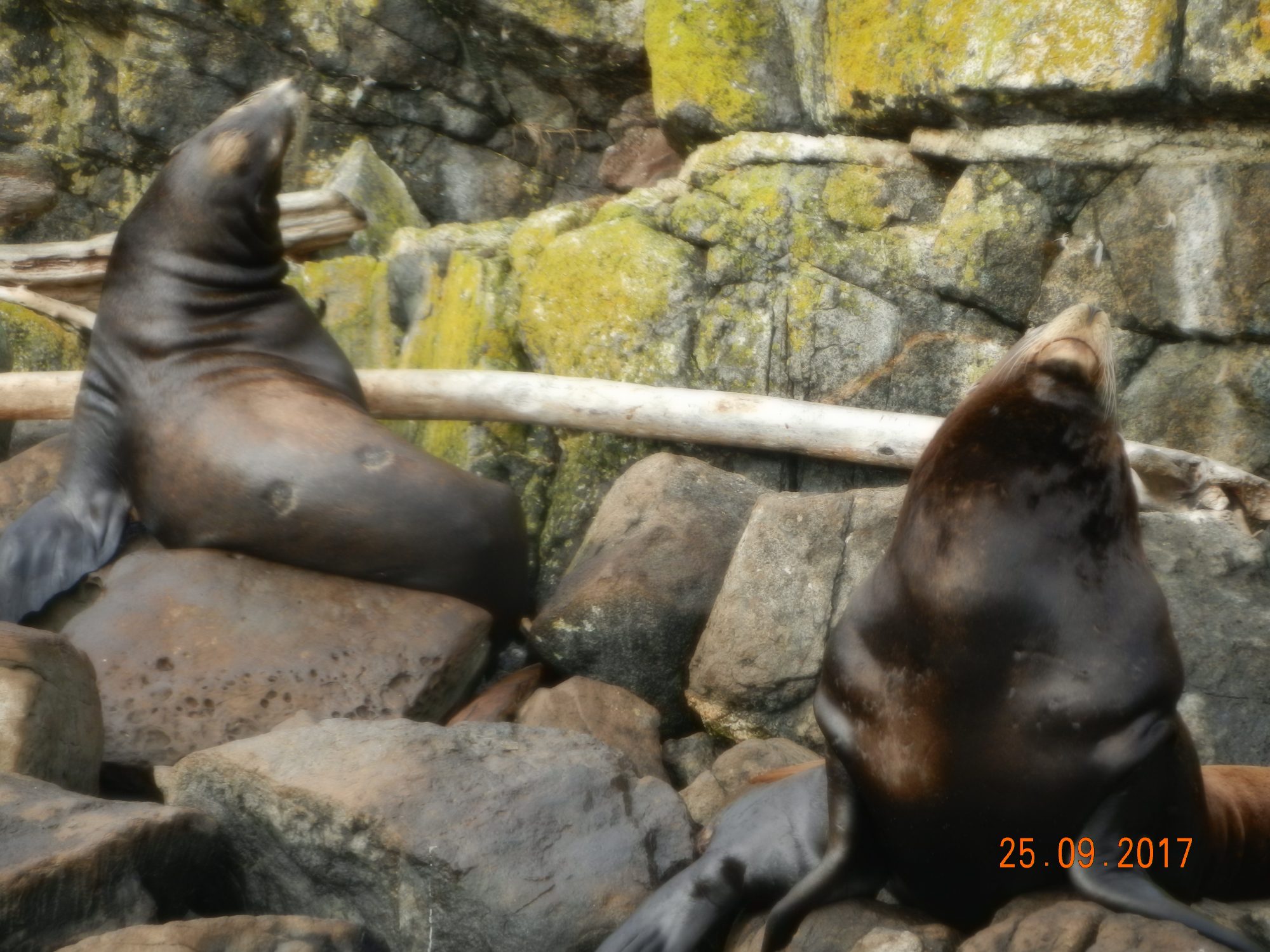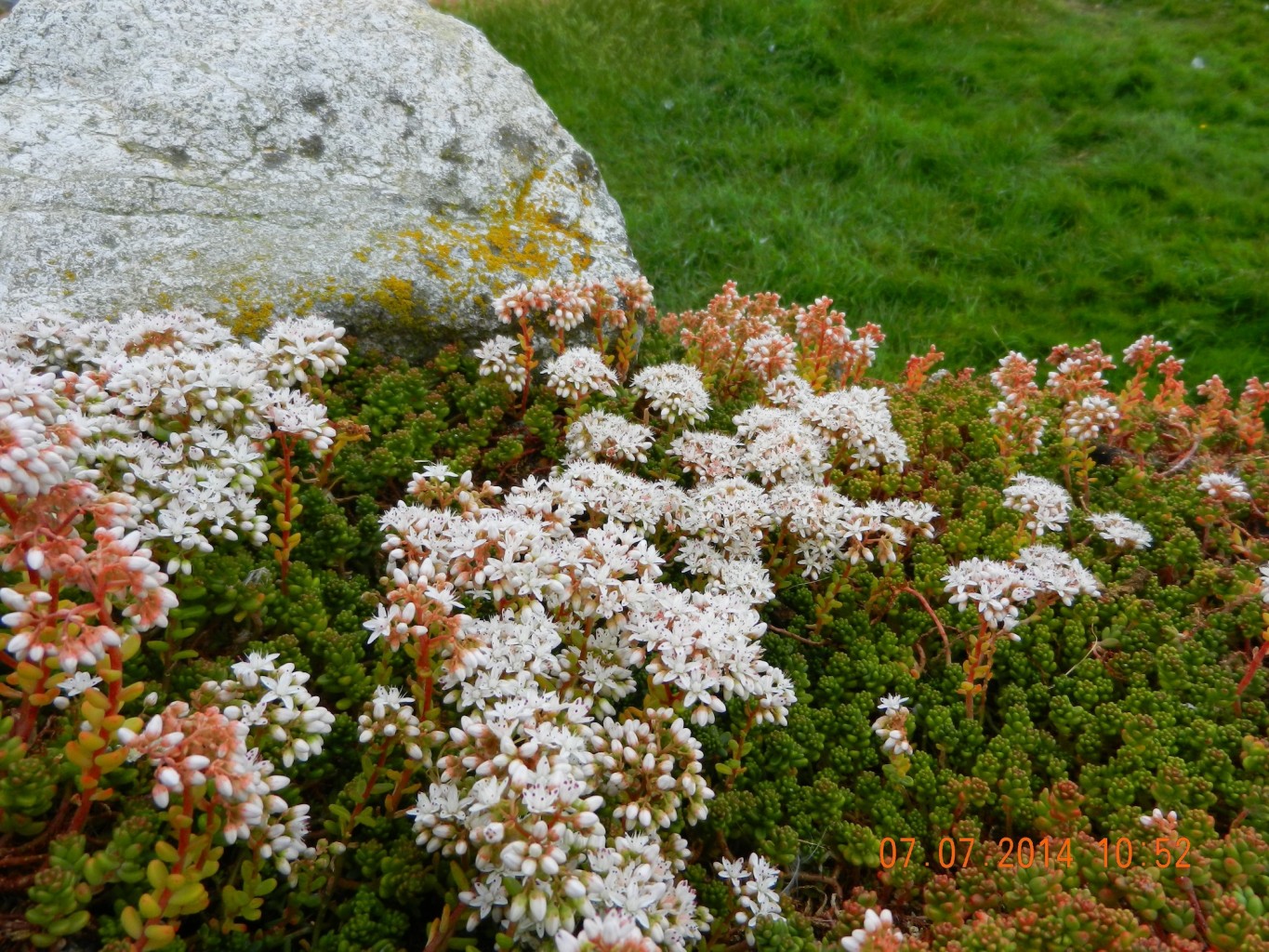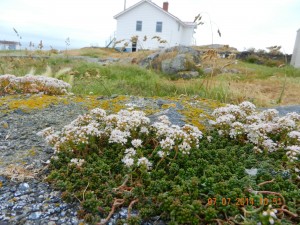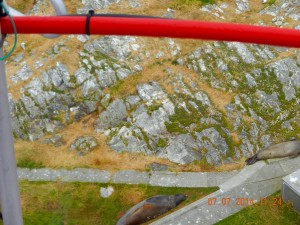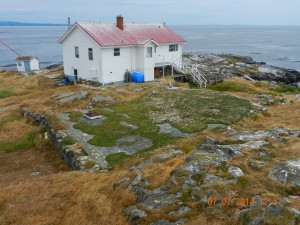I was able to get out to Race Rocks Ecological reserve with Guy today and went with former student Joao Luis de Castro and Yan Corriveau. I wanted to check on what changes have occurred on Great Race Rock Island since my last visit. Since it was an exceptionally dry summer, the effect on vegetation was evident. The spread of hauled out sealions into parts of the island traditionally not invaded also has left a significant impact on vegetation. It will be important to follow up on vegetation recovery once the rains start.
This year the sea lions have hauled out and inhabited many parts of the island formerly not used as a haulout . I am concerned that erosion because of obliteration of most of the plants in the area of the First Nations burial cairns could be detrimental to the cairns. It will be inprtant to check on this once the sealions have left again.
The lack of precipitation since May has resulted in a shrinking of the stonecrop that covers the top of the Reservoir. I had never seen it quite this dry before.
The sealion haulouts at Race Rocks do not segregate by species as they do in some other parts of the coast. Note the cookie-cutter shark bites on the California Sealion on the right hand picture.
Garry Fletcher, Sept 25, 2017
